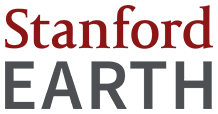Shared Analytical Facilities
Shared analytical facilities in the School of Earth, Energy & Environmental Sciences are labs that enable efficiencies of time, knowledge, and resources. They are school supported, funded, and staffed, and are shared by faculty, staff, and students across the university.
Spatial Analysis Center
The Spatial Analysis Center is a shared facility of the School of Earth, Energy & Environmental Sciences that supports research on environmental changes based on remote sensing and geographic information systems. It provides state-of-the-art equipment and expertise for Stanford researchers who conduct geospatial analyses. Ongoing research projects at SAC combine remote sensing data from optical sensors at high to coarse spatial resolutions with data from a variety of other datasources.
Stanford Center for Computational Earth and Environmental Science (CEES)
Directors: Biondo Biondi and Hamdi Tchelepi
CEES integrates Earth science and computer science to build capacity in computational methods for the Earth and environmental sciences, and to enable new growth in areas where computational activities already exist. The three units of CEES—Research, HPTC, and Education—work together to fill the gap between applied mathematics and the Earth sciences. Combining a strong focus on scientific applications with state-of-the-art hardware and computational methods, CEES is pushing forward the frontiers of computational geoscience and engaging computer scientists and architects to design software and hardware better suited for Earth and environmental science problems.
Environmental Measurements Facility
Director: Scott Fendorf
The Environmental Measurement 1: Gas-Solution Analytical Center provides quantitative analysis and technical expertise to members of the Stanford community needing to conduct soil, gas, and water measurements.
Environmental Measurement 2: Stable Isotope Biogeochemistry Lab (SIBL)
Directors: Page Chamberlain and Rob Dunbar
The Stable Isotope Biogeochemistry Laboratory (SIBL) provides analytical facilities and technical expertise to members of the Stanford community who need to determine stable isotope ratios of a variety of organic and inorganic materials from both terrestrial and marine environments. The facility has the ability to measure C, N, O (including 17O), H, and S in plant and animal tissue, soils, minerals, and waters. Moreover, by the use of infrared lasers and micro-drill techniques it provides capabilities for high-spatial resolution isotopic measurements. The laboratory is also making investments in the development of Cavity Ring-Down Laser Spectroscopy for a variety of lab and field based innovations in stable isotopic analyses.
Rock Preparation and Mineral Separation Laboratories
Director: Elizabeth Miller
These laboratories house a broad range of shared equipment for the initial steps of preparing rock samples. Numerous SES research groups use these labs, before completing more specialized procedures in their own facilities. Equipment is available for rock sawing, polishing, coring, crushing, grinding, powdering, sieving, washing, drying, separating, concentrating, etc.
Stanford ICP-MS/TIMS Facility
Director: Kate Maher
The ICPMS/TIMS Facility, also known as the Plasma Lab, is a state-of-the-art facility for the analysis of isotopes and trace elements using mass spectrometry. The array of equipment in the laboratory includes a Nu AttoM high-resolution inductively coupled plasma mass spectrometer (ICP-MS), a Nu Plasma HR multi-collector ICP-MS, a Thermal Ionization Mass Spectrometer (TIMS) and a specially designed Picotrace metal-free low particulate clean laboratory. The facility is open to collaboration with members of the Stanford community.
Mineral Analysis Facility (EPMA, SEM, XRD)
Director: Jonathan Stebbins
This facility operates three analytical instruments with widespread applications in the Earth and Materials Sciences. The Electron Probe Microanalyzer (EPMA) provides highly accurate major and minor element compositional data on solid materials at the micron scale, and is housed in the Stanford Nanocharacterization Laboratory (www.stanford.edu/group/snl/). A user-friendly powder X-ray diffractometer (XRD) and scanning electron microscope (SEM) are located in the Green building, and provide ready access to mineral identification and imaging.
Geochronology Facility
Director: Marty Grove
This facility comprehensively examines the evolution of the Earth's crust using highly integrated geochronologic approaches conducted in a wide spectrum of analytical facilities that are all housed within the School of Earth, Energy & Environmental Sciences. Their highly collaborative research provides fundamental data to many disciplines throughout the geosciences, including tectonics, geodynamics, petrology, geochemistry, geomorphology, sedimentology, stratigraphy, paleontology, and paleoclimatology.
Shared Field Measurement Facility
Manager: Sara Cina
The Shared Field Measurement Facility's primary aim is to provide support, education, and technical expertise to members of the Stanford community interested in or needing to conduct field-based research or teaching. The facility houses a range of geophysical, GPS, and surveying equipment, as well as field computer options for data logging or mapping.



